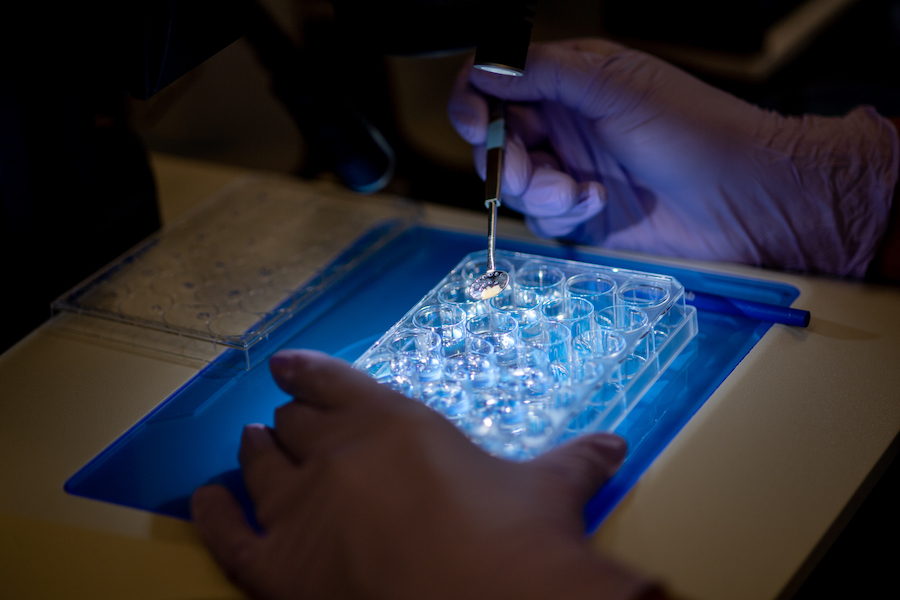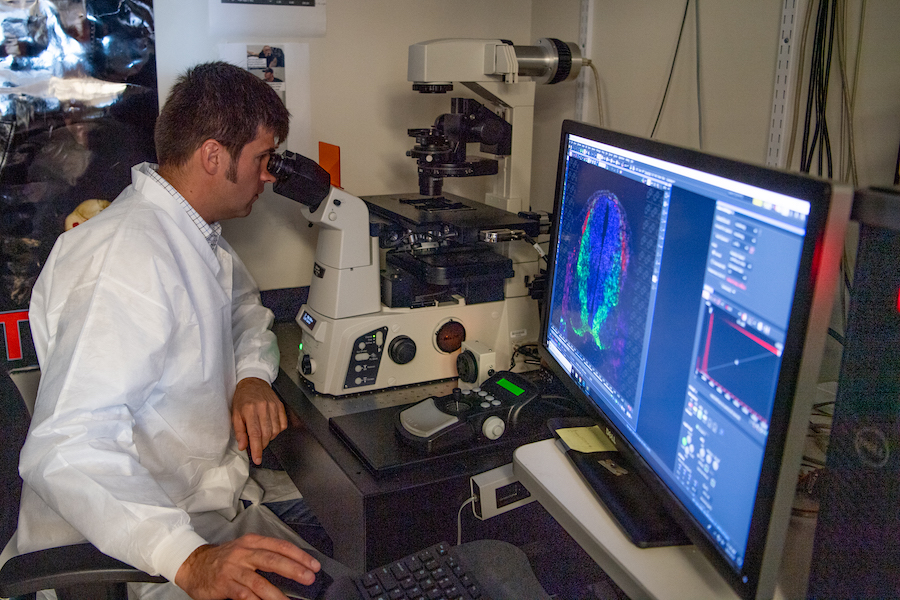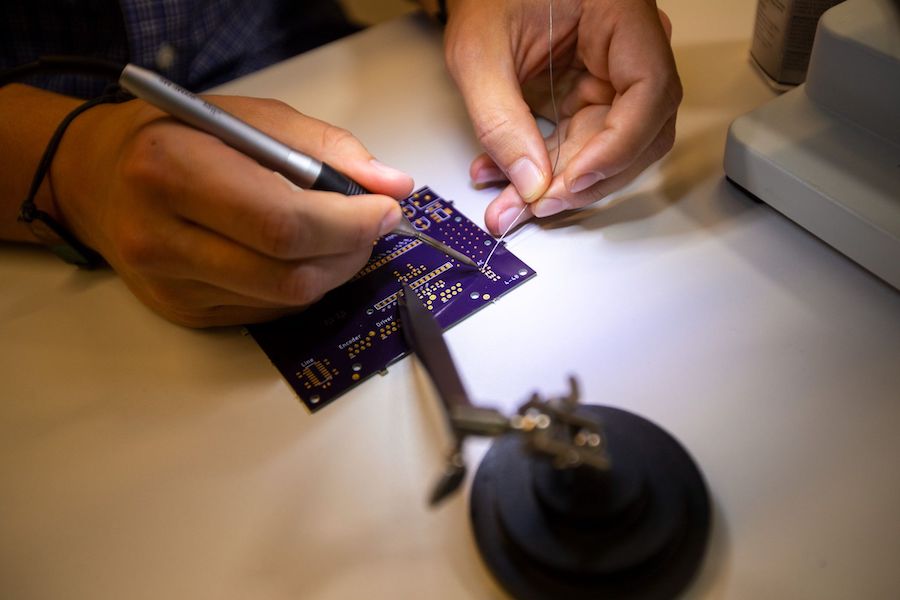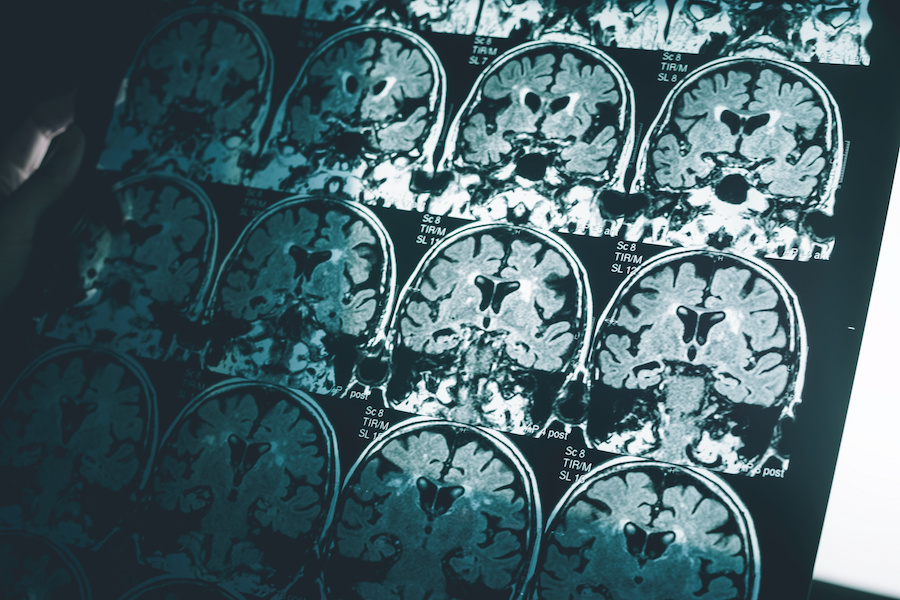Carney Institute grants $898k in innovation awards to Brown scientists

Through an innovation awards program, the Robert J. and Nancy D. Carney Institute for Brain Science will provide $898,000 in seed funding for new high-impact research in computation, Alzheimer’s disease and other areas of brain science.
The Carney Institute will support 11 collaborative projects led by 18 Brown University scientists that transcend fields of study—from gene expression in the developing nervous system to advanced sensors of brain signals to neurodegeneration.
“Breakthrough discoveries in brain science depend on collaborations and being open to new ideas,” said Diane Lipscombe, Reliance Dhirubhai Ambani Director of the Carney Institute. “The innovation awards catalyze this by focusing on creative research, new perspectives and tackling the big questions of our time.”
In 2014, the Carney Institute launched its Innovation Awards Program to support early-stage research projects that are too new to attract external funding but have great potential to advance science and benefit society. Since the program’s inception, the Carney Institute has supported 23 innovative brain science research projects.
This year, the institute received applications from researchers affiliated with 10 departments across Brown, according to John Davenport, managing director of the Carney Institute.
A feature for this year’s program is a focus on projects investigating Alzheimer’s disease and similar dementias. Of the total $898,000 granted in innovation awards, $446,000 were awarded to faculty members studying Alzheimer’s disease from different perspectives.
“We were fortunate to receive founding gifts last year to establish the Center for Alzheimer's Disease Research at Brown,” Davenport said. “Through this funding, we are excited to support new projects that will help contribute to better understanding, diagnosis and treatment of dementia.”
Below are the projects funded by this year's innovation awards.
Beyond Steady State: Mapping frontal representations onto sequential choices through reinforcement learning

Investigators: Theresa Desrochers, Rosenberg Family Assistant Professor of Brain Science, and Matthew Nassar, assistant professor of neuroscience
Learning to flexibly implement context-appropriate behavior is central to primate behavior, like turning right at a stop light to go to work and left at the same light to go to the store. However, there is a fundamental gap in the understanding of how the frontal cortical subregions thought to underlie these behaviors work together, the researchers said. Desrochers and Nassar plan to address this gap with three innovations: a novel computational approach that does not match neural signals in the brain to a model, but asks what learning tasks could be solved with them; sequential decision-making that is more naturalistic; and recording neurons from frontal cortical subregions rarely examined simultaneously.
Together, these experiments will shed light on how humans are able to do the right thing, at the right time in a complex world, Desrochers and Nassar said.
Development of quantum magnetic tunneling junction sensors for magnetoencephalography
Investigators: Gang Xiao, professor of physics, and Jerome Sanes, professor of neuroscience
For this project, researchers will develop a quantum magnetic gradiometer designed to non-invasively register weak magnetic fields from the human brain and examine its operating characteristics during simple voluntary movements and visual stimulation. The sensor with its miniaturized size will exceed the spatial resolution of existing systems and operate at room temperature, and it will have a far lower initial purchase price and lower maintenance costs than existing magnetoencephalographic systems, according to the researchers. These features should expand the utility of magnetic recording technology for human neuroscience applications to advance researchers’ understanding of human brain function in health and disease, Xiao said.
Gene expression programs for stepwise axon pathfinding

Investigator: Alexander Jaworski, June G. Zimmerman Associate Professor of Brain Science
During embryonic development, neurons need to send out axons and form connections with the appropriate targets in order to produce a functioning nervous system. This project will examine how neurons activate different groups of genes during distinct phases of this wiring process for neural circuit assembly. Jaworski said this research will inform scientists’ understanding of nervous system development and diseases that arise when neuronal wiring is disrupted.
Phenotypes and mechanisms in epilepsy-associated SCL13A5 mutation
Investigators: Judy Liu, Sidney A. Fox and Dorothea Doctors Fox Associate Professor of Ophthalmology and Visual Science, and Stephen Helfand, George D. Eggleston Professor of Biochemistry and vice chair of neurology
Mutations in the SLC13A5 gene lead to a severe form of epilepsy in infants, but there isn’t a specific treatment for babies with this condition. This project will characterize models for epilepsy-associated SCL13A5 gene mutations so that doctors and scientists can develop and test treatments to help children affected by these mutations and their families, the researchers said.
Quantitative evaluation of sense of agency during intracortical brain-computer interface use
Investigators: Carlos Vargas-Irwin, assistant professor of neuroscience, and Joo-Hyun Song, associate professor of cognitive, linguistic and psychological sciences
Intracortical brain-computer interface (iBCI) systems use signals recorded directly from the nervous system to control assistive devices, bypassing motor pathways damaged by disease or injury. Establishing a sense of agency, the feeling that one is the causal agent of their actions and thoughts, is a critical component contributing to the effectiveness and ease of iBCI use. In this study, the researchers will integrate rigorous psychophysical measurements to evaluate sense of agency during iBCI use, providing a unique benchmark for this emerging technology.
Subcutaneous multichannel wireless EEG for chronic home use
Investigator: Arto Nurmikko, L. Herbert Ballou University Professor of Engineering and professor of physics
The goal of this project is to develop a miniaturized wireless device for detecting epileptic seizure activity. Currently, the principal diagnostic method for the large patient population suffering from intermittent seizures is based on short term stays in a hospital. The researchers plan to design EEG sensors that can be used 24/7 in home settings without affecting normal daily activities. The sensors will be built from microelectronic chips that are sub-millimeter in size. They will be implanted in the subdermal space of the brain and transmit recorded brain signals transcutaneously by radio-frequency techniques.
Projects tackling Alzheimer’s disease and related dementias

Bioengineering hybrid cortical microtissues to study morphofunctional and transcriptional dynamics of human microglia in Alzheimer’s disease
Investigators: David Borton, associate professor of engineering, and Alvin Huang, GLF Translational Assistant Professor of Molecular Biology, Cell Biology and Biochemistry
In this project, Borton and Huang join forces to craft a new generation, stem cell-based tool for studying the immune responses unique to the human brain. Their goal is to make discoveries that will benefit researchers’ understanding and the treatment of a group of cumbersome brain disorders, including Alzheimer's disease. This novel tool is cost-effective and can be easily disseminated in the science community to speed up the development of new treatments, the researchers said.
Discovering novel biomarkers of aging and cognitive decline in large-scale open access human MEG data
Investigator: Stephanie Jones, associate professor of neuroscience
The neuroscience community is experiencing a revolution in its ability to share and analyze vast amounts of human brain imaging data. One domain in which there has been significant open access progress is magneto and electro-encephalography (M/EEG), where data is available from hundreds of subjects during resting states, various behavioral conditions and across the lifespan. In this project, scientists will apply novel temporal-spectral waveform classification methods to open-access MEG data to identify new biomarkers of age, gender and cognitive ability.
This biomarker identification, Jones said, will in turn provide targets for interpretation of the underlying neural mechanisms with the Jones Lab’s Human Neocortical Neurosolver computational neural modeling software. This project can help transform M/EEG from being purely diagnostic to providing targeted circuit interpretation that can guide treatments to improve brain function during cognitive decline with aging, Jones said.
Discovery and validation of novel XPO1 inhibitors to prevent Alzheimer’s disease

Investigator: Louis Lapierre, assistant professor of molecular biology, cell biology and biochemistry
Members of the Lapierre Lab are investigating new modulators of nucleo-cytoplasmic protein partitioning that can improve global protein stability and enhance the rejuvenation process of autophagy in the brain. Autophagy is the degradation of cells, which removes damaged or unnecessary cellular components. Using newly-designed compounds in cells and murine models of Alzheimer's disease, Lapiere said he hopes to pharmacologically validate this approach in order to ultimately improve the clinical outcome of this disease.
Optimizing housing conditions to accelerate the translation of research using mouse models of Alzheimer's disease
Investigators: Gregorio Valdez, GLF Translational Associate Professor of Molecular Biology, Cell Biology and Biochemistry, and Lalit Beura, assistant professor of molecular microbiology and immunology
Microbial exposure and the ensuing immune response play important roles in the incidence and progression of Alzheimer’s disease. Yet, scientists continue to study this disease in mice reared in ultra-hygienic, pathogen-free environments and consequently with a muted immune system, the researchers said. In this project, Valdez and Beura will study mouse models of Alzheimer’s disease exposed to naturally occurring pathogens and with a matured and heightened immune system. This innovative approach can accelerate the translation of discoveries made in animals to treat humans with Alzheimer’s disease, the researchers said.
Promoting adult hippocampal neurogenesis as a potential therapeutic for Alzheimer’s disease: In vivo testing of a novel target
Investigators: Justin Fallon, professor of medical science and of psychiatry and human behavior, and Ashley Webb, Richard and Edna Salomon Assistant Professor of Molecular Biology, Cell Biology and Biochemistry
Alzheimer’s disease is characterized by the loss of connections between nerve cells and ultimately neuronal death. Fallon and Webb have discovered a novel signaling pathway that promotes the birth of neurons in the adult brain and their integration into the mature circuitry. In this new project, they will test whether targeting this pathway boosts the formation and connectivity of new neurons in mouse models of Alzheimer’s disease.



